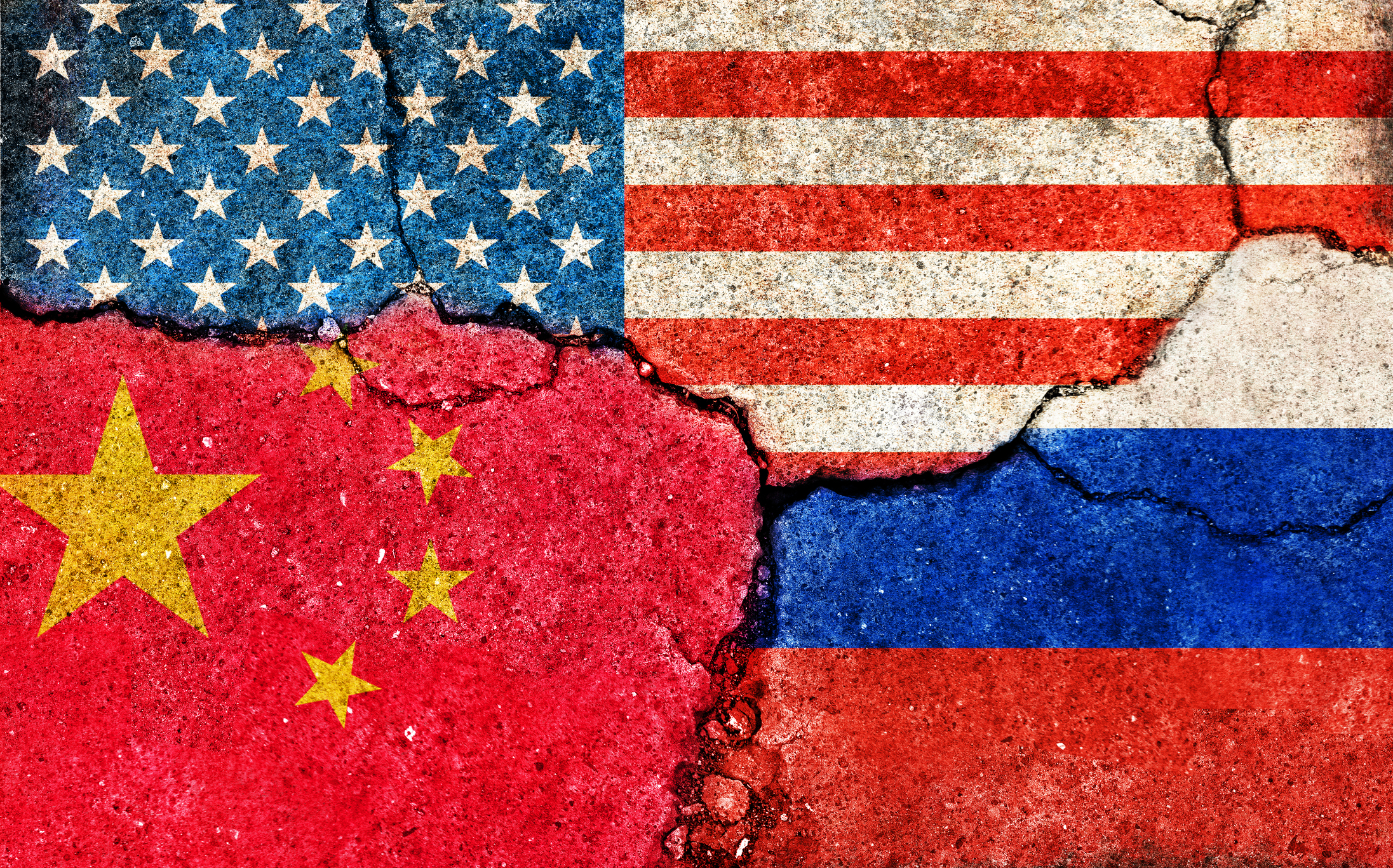Inequality: Mostly Among the 1%
The super-rich are outstripping the merely wealthy -- but the rest of us are a lot more equal than you might think.

After a brief pause for the Great Recession, income inequality is rising again, with the highest-earning 1% getting the lion's share of added income and the other 99% dividing the remainder.
But the picture of inequality that this paints is a little misleading. It turns out that there is a lot less inequality among the vast majority of Americans than there might seem, and it's not getting worse.
SEE ALSO: All Our Economic Outlooks

Sign up for Kiplinger’s Free E-Newsletters
Profit and prosper with the best of expert advice on investing, taxes, retirement, personal finance and more - straight to your e-mail.
Profit and prosper with the best of expert advice - straight to your e-mail.
The most common measure of inequality is the share of income earned by the top 1% -- the highest-earning 1.5 million individuals and couples. This was about 18% of all income in 2011, twice as much as when Ronald Reagan was reelected president in 1984. Because one-percenters get a large portion of their income from investments, their share of all income fell to 17% after the stock market plunged in 2008.
Since then, the stock market's robust recovery and meager growth in the wages and salaries that the lower 99% rely on has meant that an overwhelming share of total income growth has gone to the wealthiest citizens. In 2010, $9 of every additional $10 earned went to the top 1%, and data due in a few months will show that the same happened in 2011. With stocks up better than 10% already this year and high unemployment holding down wages and salaries, that trend will continue in 2012.
But probe a bit deeper and another picture emerges. The gap between most one-percenters and most of the 99% isn't that wide because the most extreme inequality is at the very top of the income scale. The chasm between the super-rich -- the highest-earning 15,000 tax filers -- and others in the top 1% is so large that it skews the overall result. Factor it out, and even inequality between the poor and the well-off is far less than 10-to-1. Though that's still too much inequality in the view of some people, it's not the extreme inequality that often makes the headlines.
Consider how much inequality there is within the 1% richest. The average yearly income for this group is $418,000. The average income for the top 1% of them -- the 15,000 in "the 0.01%" -- is $23 million, or more than 50 times as much.
Contrast that with the ratio between the $418,000 average income of the 1% and the average for all tax filers -- $68,000 in 2010. Even after accounting for the fact that this $68,000 is inflated a bit by the big earnings at the very top, the average top earner receives less than six times as much income as the average taxpayer. There's much less distance between the average American and the average rich person than there is between the merely rich and the super-rich.
Sliced another way, there is a similar difference between the bottom of the 99% and the top of it. According to one study, when government subsidies and employer-funded health insurance are included, the ratio of well-off taxpayers at the 90th percentile of income and the poor at the 10th percentile is also about 6-to-1. And this measure of inequality isn't getting wider. That 6-to-1 ratio is unchanged since 1990s, and the ratio was roughly 5-to-1 in the 1980s.
By contrast, inequality within the top 1% soared over that same period. In 1984, the super-rich 0.01% earned $1 out of every $9 pulled in by all of the richest 1%. By 2010, the super-rich were hauling in $1 of every $5 earned by one-percenters.
In fact, the concentration of income among the super-rich is about as high as it has ever been, and much higher than it was for most of the 20th century. They collected about 3.3% of all income in 2011, a little below the record 3.5% in 2007 and triple the level in 1984. Between World Wars I and II, the average for the super-rich was 2% of income, and from 1946 to 1991, it was 1% of income. Then it started rising.
Meanwhile, inequality among the vast majority of people isn't so wide, and it isn't getting wider. Even after a brutal recession that lowered living standards for most people, the average American isn't losing ground compared with most others, even if the gulf between average and very wealthy is growing broader. Cornell University economist Robert Frank, an expert on public attitudes about wealth, argues that perceptions about living standards are based as much on one's relative position compared with neighbors and coworkers than on actual dollars and cents.
If, in F. Scott Fitzgerald's words, the very rich "are different from you and me," the super-rich are so different that their wealth prompts more curiosity than outrage. The wealth of Warren Buffett and Mark Zuckerberg is beyond the aspirations or care of most people in today's challenging economy. What's another billion or two?
Get Kiplinger Today newsletter — free
Profit and prosper with the best of Kiplinger's advice on investing, taxes, retirement, personal finance and much more. Delivered daily. Enter your email in the box and click Sign Me Up.

-
 When Should You Hand Over the Keys — to Your Investments?
When Should You Hand Over the Keys — to Your Investments?The secret to retirement planning? "The best time to hand over the keys is before you’ve realized you need to hand over the keys."
By Maurie Backman
-
 A checklist for high-net-worth individuals looking to maintain and grow their wealth.
A checklist for high-net-worth individuals looking to maintain and grow their wealth.A strategic guide to managing, preserving, and expanding your wealth for long-term financial security.
By Dori Zinn
-
 The Economic Impact of the US-China Trade War
The Economic Impact of the US-China Trade WarThe Letter The US-China trade war will impact US consumers and business. The decoupling process could be messy.
By David Payne
-
 AI Heads to Washington
AI Heads to WashingtonThe Kiplinger Letter There’s big opportunity for AI tools that analyze MRIs and other medical images. But also big challenges that clinicians and companies will have to overcome.
By John Miley
-
 The AI Doctor Coming to Read Your Test Results
The AI Doctor Coming to Read Your Test ResultsThe Kiplinger Letter There’s big opportunity for AI tools that analyze CAT scans, MRIs and other medical images. But there are also big challenges that human clinicians and tech companies will have to overcome.
By John Miley
-
 The New Space Age Takes Off
The New Space Age Takes OffThe Kiplinger Letter From fast broadband to SOS texting, space has never been more embedded in peoples’ lives. The future is even more exciting for rockets, satellites and emerging space tech.
By John Miley
-
 Rising AI Demand Stokes Undersea Investments
Rising AI Demand Stokes Undersea InvestmentsThe Kiplinger Letter As demand soars for AI, there’s a need to transport huge amounts of data across oceans. Tech giants have big plans for new submarine cables, including the longest ever.
By John Miley
-
 What DOGE is Doing Now
What DOGE is Doing NowThe Kiplinger Letter As Musk's DOGE pursues its ambitious agenda, uncertainty and legal challenges are mounting — causing frustration for Trump.
By Matthew Housiaux
-
 A Move Away From Free Trade
A Move Away From Free TradeThe Letter President Trump says long-term gain will be worth short-term pain, but the pain could be significant this year.
By David Payne
-
 Trump’s Whirlwind Month of Crypto Moves
Trump’s Whirlwind Month of Crypto MovesThe Kiplinger Letter The Trump administration wants to strengthen U.S. leadership in the cryptocurrency industry by providing regulatory clarity.
By Rodrigo Sermeño